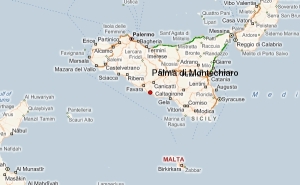Matul il-kampanja elettorali riċenti tal-2022, fl-Italja, fid-dibattitu politiku, reġgħet infetħet id-diskussjoni dwar il-ġenerazzjoni tal-enerġija nuklejari.
Matteo Salvini, presentement Ministru għall-Infrastruttura u t-Transport, apparti li hu ukoll Deputat Prim Ministru fil-Gvern ta’ koalizzjoni Taljan, emfasizza, li, fl-isfond tal-kriżi enerġetika kurrenti l-Italja għandha tikkunsidra mill-ġdid il-politika tagħha dwar l-impjanti nuklejari.
Il-votanti Taljani darbtejn esprimew ruħhom b’mod ċar dwar ir-rejatturi nuklejari fuq art Taljana. L-aħħar darba li għamlu dan kien f’referendum li sar f’Ġunju 2011, ftit wara d-diżastru nuklejari li seħħ f’Fukushima l-Ġappun f’Marzu 2011. Dakinnhar, 94 fil-mija ta’ dawk li vvutaw għażlu projibizzjoni totali ta’ kostruzzjoni ta’ impjanti nuklejari fl-Italja.
Il-kriżi kurrenti tal-enerġija qed isservi ta’ pressjoni fuq kulħadd biex jinstabu sorsi alternattivi ta’ enerġija bi prezz li nifilħuħ. L-enerġija nuklejari hemm marbuta magħha spejjes moħbija li rari ħafna jittieħdu in konsiderazzjoni kull meta l-materja tkun soġġett ta’ dibattitu politiku: l-iskart nuklejari ġġenerat kif ukoll ir-riskji inerenti, marbuta ma’ ħsara jew funzjonament ħażin tal-impjanti nuklejari. L-impatt tal-inċidenti nuklejari fi Three Mile Island (Pennsylvania Stati Uniti – 28 ta’ Marzu 1979), Chernobyl (Ukrajina – 26 t’April 1986) u Fukushima (Ġappun – 11 ta’ Marzu 2011) huma xhieda biżżejjed tal-konsegwenzi li jista’ jkollna niffaċċjaw meta tkun ikkunsidrata l-għażla ta’ enerġija nuklejari.
Il-mod kif niddisponu mill-iskart nuklejari hu suġġett għal dibattitu kontinwu fuq livell globali. L-ispiża biex dan isir hi waħda sostanzjali, u dan b’referenza kemm għall-ispiża ambjentali kif ukoll għal dik finanzjarja. Fil-passat riċenti, viċin tagħna, l- eko-mafja irmiet kull xorta ta’ skart, inkluż skart nuklejari, fil-Baħar Mediterranean. Dan għamlitu fi 42 vapur differenti, kollha mgħarrqa f’partijiet differenti tal-Mediterran. Il-kaz speċifiku tal-vapur Kunsky mgħarraq ftit il-barra mill-kosta tal-Kalabrija, kien ġie żvelat mill-pentiti tal- ‘Ndrangheta/Camorra, Francesco Fonti u Carmine Schiavone, snin ilu fix-xhieda tagħhom lill-awtoritajiet Taljani.
Bosta mir-riskji tekniċi tal-impjanti nuklejari illum il-ġurnata kważi nstab tarf tagħhom u dan minħabba l-avvanżi kontinwi fit-teknoloġija. Hemm iżda eċċezzjoni waħda! Kif ġie żvelat bħala riżultat tad-diżastru ta’ Fukushima, il-forzi naturali jibqgħu kontinwament bit-tmun f’idejhom! F’Fukushima, għal darba oħra ġie ikkonfermat li r-riskji marbuta mat-terrimoti mhux la kemm insibu tarf tagħhom! Dan kollu għandu relevanza kbira għad-dibattitu dwar il-kostruzzjoni ta’ impjanti nuklejari wara biebna, f’teritorju Taljan.
Fl-2011 l-awtoritajiet Taljani kienu indikaw li s-sit fi Sqallija li probabbilment jintuża biex fuqu jinbena impjant nuklejari qiegħed mal-kosta tan-nofsinnhar ħdejn il-lokalità ta’ Palma di Montechiaro. Dan ikun madwar 100 kilometru fil-Majjistral ta’ Għawdex.
Kif nafu, Sqallija hi zona fejn it-terrimoti huma frekwenti. Apparti t-terrimoti frekwenti “żgħar” li nisimgħu dwarhom u li xi kultant nindunaw bihom matul is-sena, fi Sqallija seħħew tnejn mill-agħar terrimoti li qatt laqgħtu lill-Ewropa. Fl-1693 terrimot fix-Xlokk ta’ Sqallija kellu qawwa ta’ 7.4 filwaqt li f’Messina fl-1908 terrimot ieħor laħaq qawwa ta’ 7.1 fuq l-iskala Mercalli. Dawn iż-żewġ terrimoti ħolqu ħerba u wasslu għat-telfien ta’ bosta ħajjiet. L-infrastruttura ukoll sofriet danni kbar!
Id-deċiżjoni dwar jekk il-Gvern Taljan jerġax jipprova jmur lejn in-nuklejari biex jiġġenera l-elettriku fl-Italja mhux ser tittieħed f’data fil-qrib. Imma, meta jibdew jinġabru l-firem għal referendum fuq is-suġġett ma tantx ikun baqa’ żmien biex għal darba’oħra nqiesu sewwa x’nistgħu nagħmlu.
F’Malta, l-interess tagħna hu dwar l-impatt fuqna ta’ impjant nuklejari mal-kosta ta’ Sqallija viċin ta’ Palma di Montechiaro f’kaz li dan l-impjant jiżviluppa l-ħsara jew għal xi raġuni jibda jaħdem b’mod erratiku.
Tajjeb li nżommu f’moħħna li minħabba l-emissjonijiet radjuattivi riżultat tad-diżastru ta’ Fukushima kellha sseħħ evakwazzjoni sħiħa f’distanza ta’ 200 kilometru mill-impjant nuklejari. Għawdex, kif tafu, hu inqas minn 100 kilometru mill-kosta ta’ Sqallija. Daqshekk huma ċari l-konsegwenzi għalina ta’ impjant nuklejari mal-kosta ta’ Sqallija!
ippubblikat fuq Illum: 15 ta’ Jannar 2023







